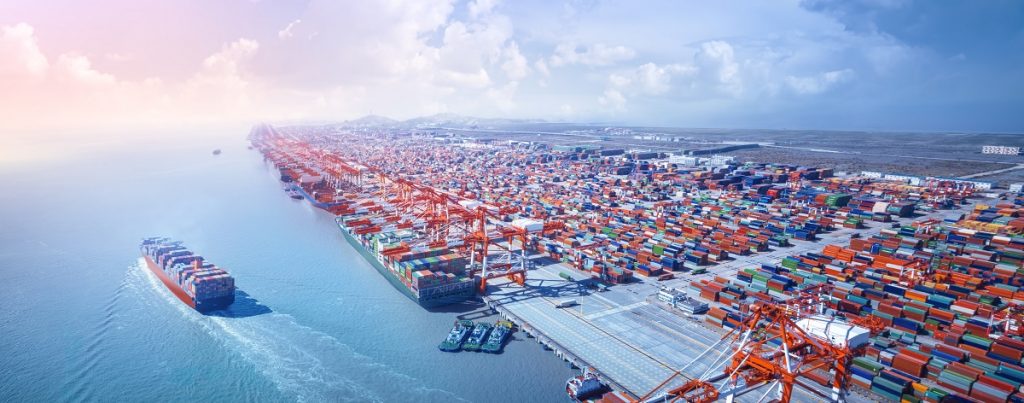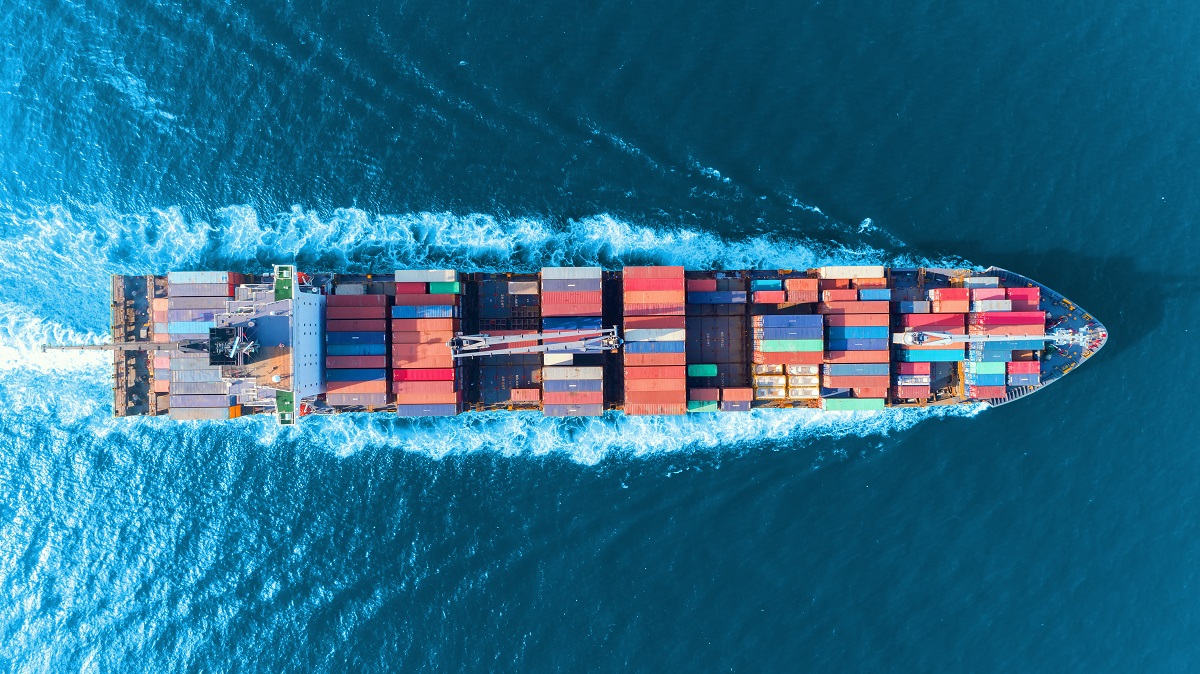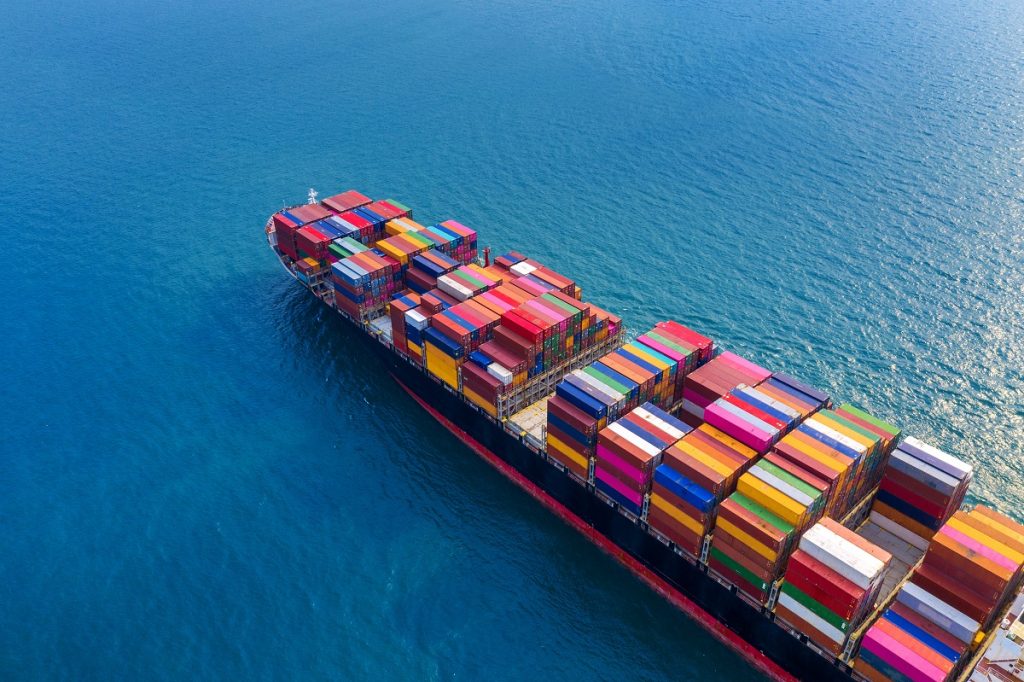Ocean Freight Shipping: Ocean Freight Rates and Logistics
What is Ocean Freight Shipping?
Ocean freight shipping or sea freight transport is the shipping method of goods by the sea via shipping containers.
 Among all the methods of shipping, ocean freight is the most common mode of transport that importers and exporters use. As a matter of fact, 90 percent of goods/products are shipped by ocean freight and sea freight worldwide. Some other international freight transport modes such as courier, standard and express air freight are all faster but more expensive. Smaller shipments and products with a high value usually go by these other freight transport modes.
Among all the methods of shipping, ocean freight is the most common mode of transport that importers and exporters use. As a matter of fact, 90 percent of goods/products are shipped by ocean freight and sea freight worldwide. Some other international freight transport modes such as courier, standard and express air freight are all faster but more expensive. Smaller shipments and products with a high value usually go by these other freight transport modes.
Today, some freight forwarders are offering a relatively new service called expedited freight—a good alternative to other freight modes. Sometimes, ocean freight is too slow, and the air freight is too pricey, so expedited freight is a good option. This expedited freight service is often nearly as quick as air freight, but it costs more like sea freight. It works by rationalizing sea freight processes while tying in with the faster sea services and premium trucking shipping services.
Advantages of Ocean Freight Shipping Services
Lesser Restrictions
International and national law, carrier organization and individual carrier regulations all play their role in transporting goods/products. They are the ones responsible for defining and restricting what goods are considered dangerous for transport. Normally, more products are restricted in air cargo than the ocean freight shipping. The restricted products include all things flammable, gases, corrosive or toxic items, magnetic substances, biochemical and health risks products.
Capacity and Value
Every one container has the capacity to carry 10,000 beer bottles. Aside from its large capacity, ocean freight shipping is also way cheaper than the other modes of transport. Furthermore, any shipment weighing more than 500 kg is too expensive if you will choose air freight. Whereas, for light shipments, you can use a chargeable weight calculator. This calculator lets you identify whether your shipment will be charged by its actual weight or its dimensional weight.
Lesser CO2 Emissions
When it comes to CO2 freight emissions, ocean freight emits lesser CO2 as compared with air freight. Based on research, 2 tonnes shipped for 5,000 kilometres by ocean freight will lead to 150 kg of CO2 emissions. Whereas, air freight will emit 6,605 kg of CO2 emissions.
Drawbacks Of Ocean Freight Services
Protection
Ocean/sea freight is more likely to get damaged than air freight cargo. The main reasons are goods stay in transit a lot longer, and ships are most likely to move. However, don’t worry too much about ocean freight cargo falling off ships. The urban myth says that there are 10,000 lost per year. However, it’s more like 546 of the 120 million container movements per year. Hotspots in recent years have included the Gulf of Guinea, Horn of Africa, and the Malacca Straits.
Reliability
Customs delays are more common in ocean cargo because of some factors. Port congestion and bad weather conditions are generally the main reasons why there are more delays in ocean freight shipping. Furthermore, there has been more takeup of tracking technology in air cargo than the ocean freight. Lack of tracking technology in ocean freight makes it more likely to get misplaced than air cargo. This usually happens when the ocean shipment is less than a container load (LCL). With that being said, ocean freight is slowly becoming more reliable to compete with air freight.
Speed
As compared to ocean liners, airplanes are about 30 times faster. Passenger jets cruise at 575 mph, while ocean liners move at 16-18 mph only. A shipment going by air freight from China to the US usually takes at least 20 days.
Ocean/Sea Freight Logistics: LCL and FCL
Ocean freight and sea freight have two main options: a full container load (FCL) and a less than container load (LCL).
Less than container load (LCL)
When it comes to Less than container load (LCL), several shipments are packed into one container only. This means that there are more works for the forwarder and there is extra paperwork involved. Also, there are more physical works of consolidating various shipments into a container before the main transit. There are more de-consolidating works of the shipments at the other end, as well.
Full container load (FCL)
As compared to LCL, shipping rates in full container load (FCL) are lower. Thus, it is more worthy to use a full container most especially if your shipment is large enough. You can do this too even if your goods do not fill a full container. The good starting point for upgrading from LCL to FCL is somewhere around 15 cubic meters.
Ocean Freight and Sea Freight Rates and Charges
With the exception of particularly heavy goods, most LCL is charged per volume of goods, and not per weight.
Whereas for most products, you can use these guidelines for selecting the most cost-effective mode:
Shipments weighing more than 500 kg becomes uneconomic when you use air freight mode. If sea freight is around 50 cents/kg (China-US shipment), it will take around 30-40 days. While a China-US shipment between 150 kg and 500 kg at about $4 per kilo is economic for air freight. Its shipping time will take around 8-10 days. You can also use express air freight which is a few days quicker but more expensive.
If packages are lighter than 150 kg, it can economically go by express freight courier. A China-US shipment at about $6 per kilo will take around 3 days.
Ocean and Sea Freight Costs and Rates: Common Factors That Affects it
- Customs security surcharges (AMS, ISF)
- Container Freight Station (applies for LCL only)
- Terminal Handling Charges (charges by the port authority)
- Accessorial charges (fuel surcharges, handling hazardous materials, storage, etc)
- Pickup and delivery
- Customs brokerage
- Insurance
- Routing charges

Do International Shipping Prices and Sea Freight Rates Change?
For several decades up to now, world trade has been fueled by the abundant and increasing supply of cheap products. As a result, the actual ocean freight shipping costs became almost irrelevant. However, there has been a dramatic fall in ocean-freight rates (more than 75%) since 2012. The demand isn’t forecasted to reach supply levels until 2022 as estimated. This a bad news for ocean carriers, but good news for every importer and exporter.
Get an Estimate Today
Are you looking for a Sea/Ocean freight services? Why not visit All Freight Shipping. We offer a wide range of ocean freight shipping services. You can also contact us today to get an estimate for your sea freight service. Send us a message if you have more questions about sea/ocean or other freight shipping services.


